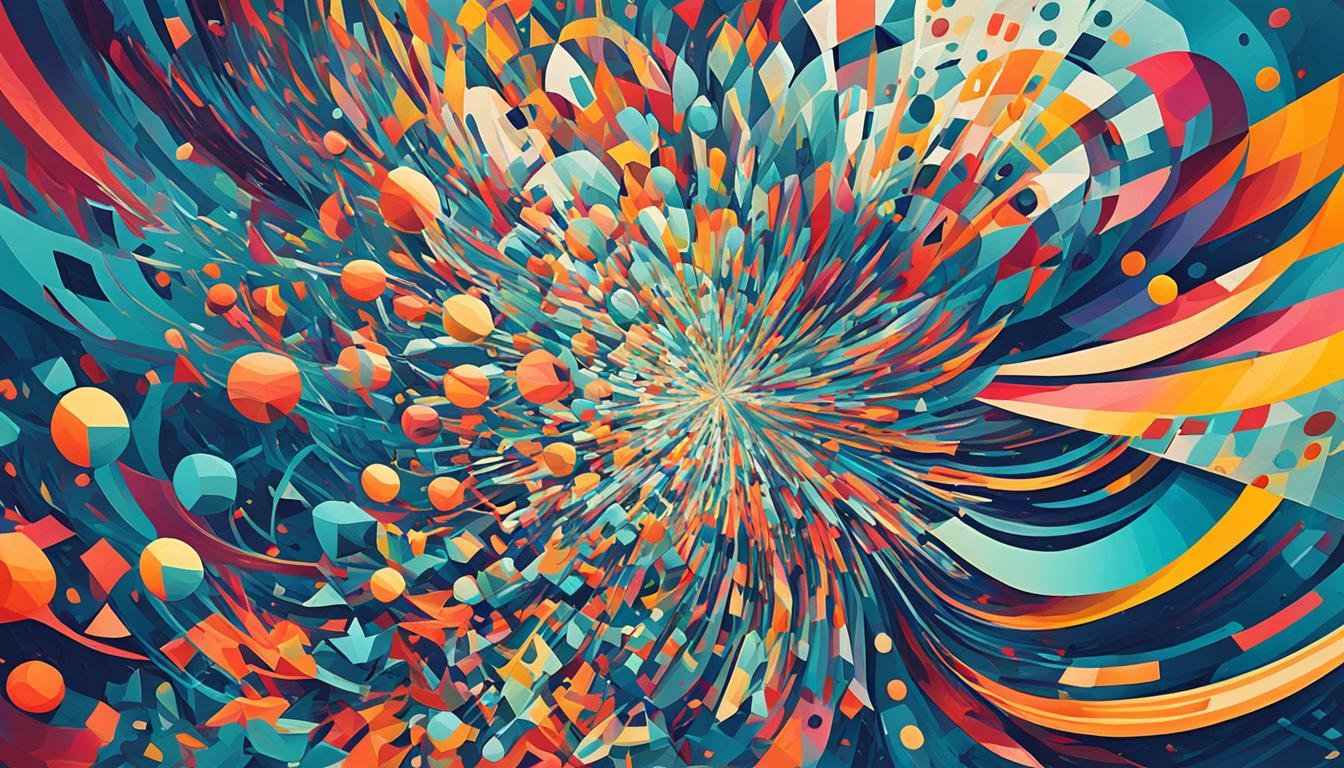In 2020, the global pandemic made us turn to online ways, leading to big changes in the art world. We saw more online sales, augmented reality, and virtual art rooms. This shift helped bring AI art into the spotlight, exciting both artists and art lovers.
Dirk Boll from Christie’s London shared how AI has changed the game. It now takes just seconds to catalog art, down from days before. AI also helps art experts quickly understand market trends, track famous people, and study how people collect art by looking at lots of data.
AI’s role in art goes beyond just making things faster. A Swiss AI company, Art Recognition, used AI to identify a painting by Raphael with 96% certainty. This discovery changed the painting’s value by hundreds of millions of dollars.
The art world is embracing this tech change, and the benefits of AI art are clear. It makes processes quicker and more precise, boosts creativity, and opens up new ways to use art. AI is changing how we see and interact with art.
Key Takeaways:
- AI is transforming the art industry, improving efficiency and enhancing decision-making processes.
- AI-powered art authentication and valuation offer unprecedented precision, leading to significant market impact.
- AI art can unlock new avenues for creative expression and artistic exploration.
- The integration of AI in the art world is seen as a tool for advancement rather than a threat to human artists.
- The future of AI art suggests a collaborative relationship between technology and human creativity.
The Rise of AI Art Generators
In recent years, the art world has seen a big change with AI art generators. Tools like Stable Diffusion, Midjourney, and DALL-E-2 have changed how we make and see art. These AI art generators use smart algorithms and learning to make unique and personal art from text prompts.
To make AI art, you pick a dataset of art, train algorithms on it, and then fine-tune the results. AI art generators use different algorithms, like DeepDream, StyleGAN, and CycleGAN, to make many styles and effects.
Exploring Stable Diffusion, Midjourney, and DALL-E-2
Stable Diffusion is known for making images better, with more accuracy and stability. Midjourney lets users create unique art with text prompts. DALL-E-2, made by OpenAI, is famous for turning text into images.
These AI art generators do more than make art; they mix tech, creativity, and human thoughts. As the AI art creation process grows, it makes us think about art, the artist’s role, and the future of art.
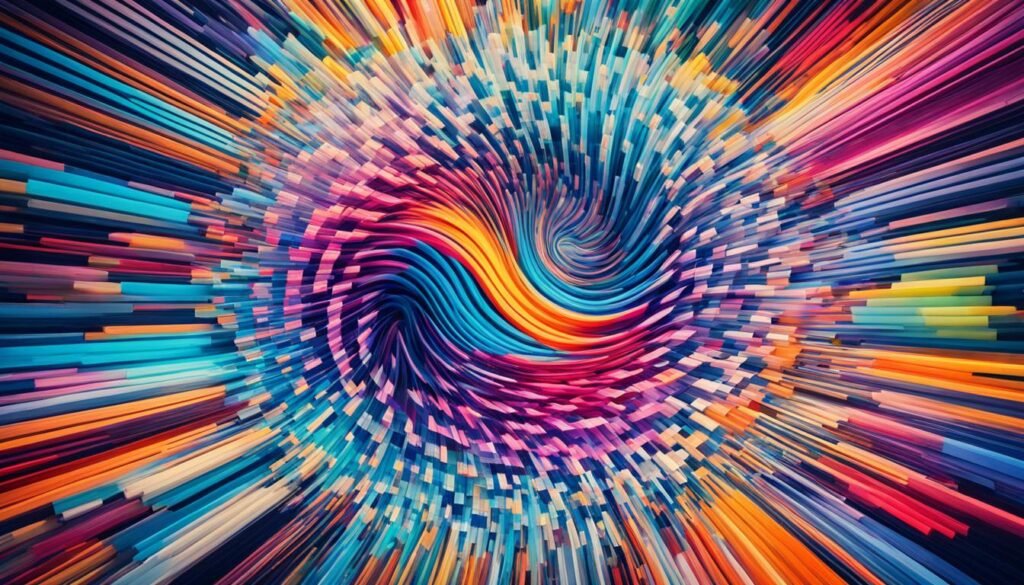
The rise of AI art generators has given artists and creatives new ways to share their ideas. As these technologies get better, the chance for AI-generated art to change the creative world is thrilling.
The Growing Popularity of AI Art
AI art has quickly caught the eye of both the art world and social media. The hashtag #aiart on Instagram has over 8.5 million posts. This shows how much people are interested in this new kind of art. But, it’s still not as popular as traditional art like drawing and painting.
A study from 15 years ago showed interesting results. When people saw abstract images and were told they were made by humans or computers, they preferred human-made ones. Their brains also reacted more positively to human art. This means AI art is getting attention, but people still like human-made art more.
Now, copies of famous artworks are not worth much. This shows people want real and unique art. As AI art becomes more common, this desire for originality will likely grow.
Artists will need to learn new skills as AI art becomes more popular. Working with AI, learning new ways to create, and being creative will help them. This way, they can use AI art to their advantage while keeping their own style.
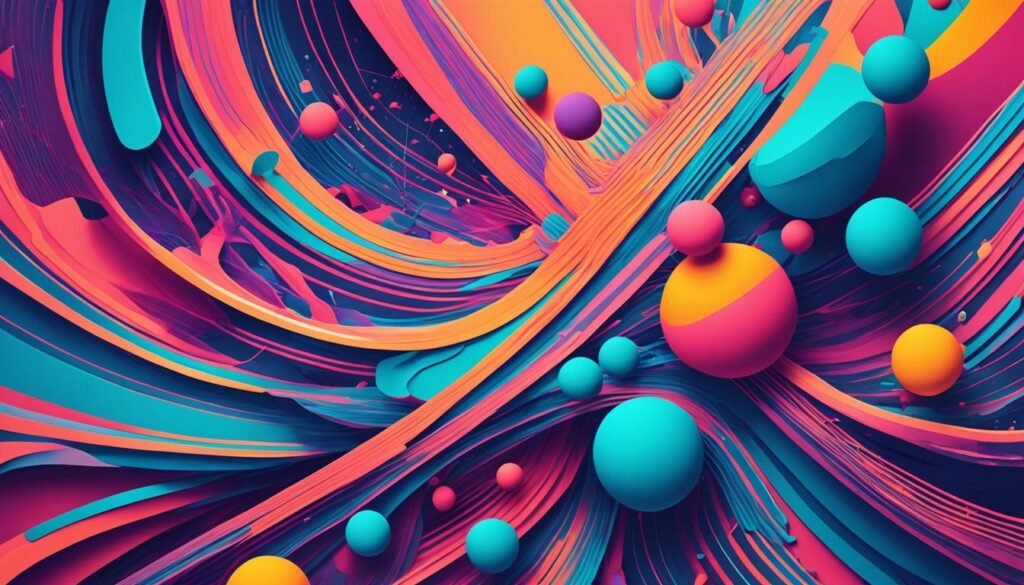
AI art’s growing popularity shows how technology is changing art. The art world is figuring out what this means for creativity and who makes art. It’s clear AI will keep changing art, making us rethink what creativity and authorship mean.
Commercial Applications of AI Art
The rise of commercial ai art has changed the game. From the hit Netflix short film “The Dog and the Boy” to the first ai art in media magazine cover by Cosmopolitan, AI-generated images are changing the art world. They’re making a big splash in many industries.
The entertainment world has fast adopted ai art in entertainment. Did you know 95% of Hollywood credits go to those making visual magic like special effects? This shows how vital visual artists are. And AI tools could change the game even more.
From Netflix to Magazine Covers
Tools like Dall-E, Midjourney, and Stable Diffusion can whip up hundreds of images in minutes. This could shake up the work of hundreds of thousands of commercial artists. They work in entertainment, videogames, ai art in advertising, and ai art in magazines. Now, Stable Diffusion’s model is easier to use, thanks to a creative commons license. This means more people can make amazing images for work.
AI art isn’t just for entertainment. In publishing, Cosmopolitan made the first ai art in media magazine cover. This shows how AI can be versatile and powerful. As AI and human art mix more, commercial ai art will keep changing the creative scene.
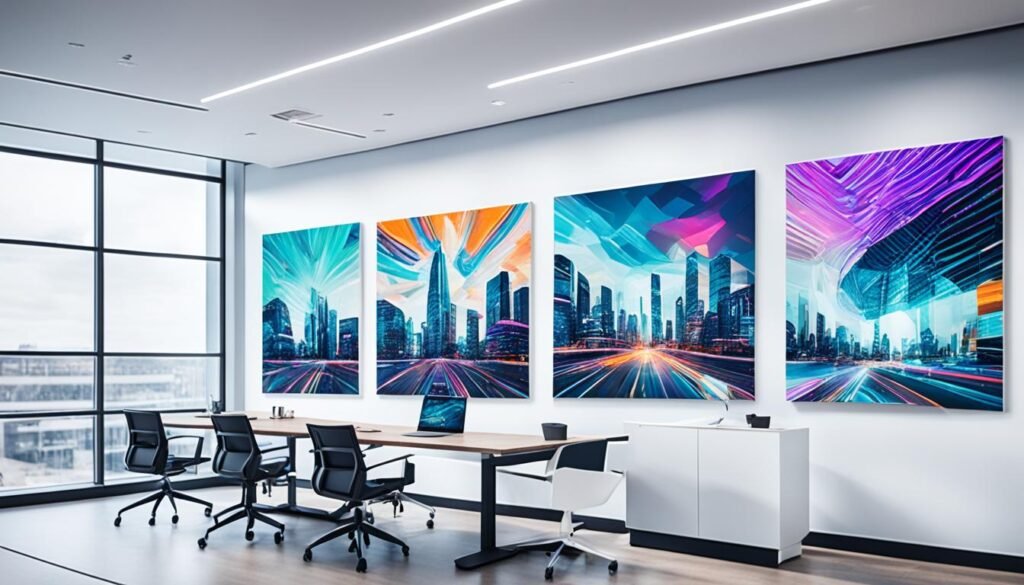
“The release of Stable Diffusion’s model under a creative commons license gives individuals with internet access or a mid-grade PC the capability to create stunning images, including for commercial use, emphasizing the widespread availability and accessibility of AI-based tools.”
But, adding AI art to projects brings up big questions. Like, will it make human artists less valuable? What about ethics and how it affects jobs? These are key issues as commercial ai art grows.
The Debate: Tool or Replacement?
The rise of AI art has sparked a big debate in the creative world. Some see it as a game-changer that boosts human creativity. Others worry it could threaten the jobs of traditional artists. The debate centers on key topics like AI art’s impact on artists’ rights and its effect on the value of art.
Supporters say AI art is just a tool, like the digital art tools of the 1990s. They believe it brings new possibilities and more creative freedom. A commenter noted, “AI is a tool, a human creation that allows expression of creativity.” Others see it as a “master dancer” that can improve the art-making process.
But critics argue that AI art is just a mix of others’ work, lacking the skill and personal touch of an artist. They call it “fake art” and say it’s as easy to make as AI art with stolen work. The worry about AI art’s impact on artists’ rights is real, with some seeing it as a sign of a society that values profit over people.
As AI-generated images start winning awards, the debate grows. Some see it as proof of the tech’s skill, while others worry it undervalues the work and knowledge of traditional artists.
The debate on AI art is complex, with strong points on both sides. As AI technology gets better, the creative community must handle these issues with care. It’s important to protect artists’ rights while exploring AI’s potential benefits.
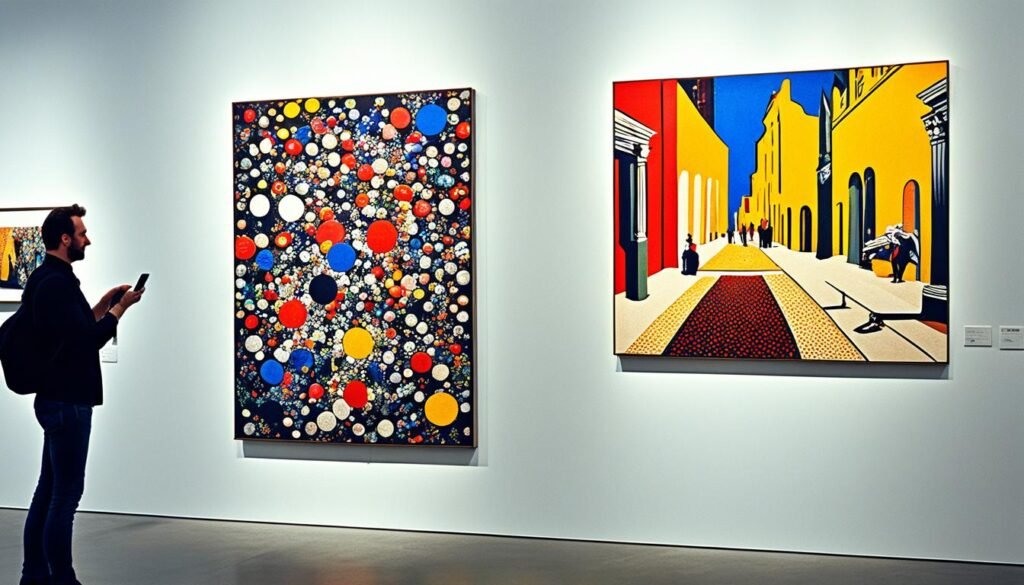
“Once it gets even better and eradicates all the red flag giveaways, we’ll have no chance to tell the difference.”
why ai art is good
The world of art is changing fast, thanks to AI technology. AI art has brought big changes to how we make art. It makes processes faster and predicts what we might like, changing art forever.
AI art automates tasks that used to take a lot of time. This lets artists spend more time on what they love. It helps with things like tracking trends, checking art authenticity, and valuing pieces. This means artists can be more creative and innovative.
Unleashing Creativity through Predictive Capabilities
AI art does more than just make things faster. It uses data to predict what will be popular and inspire new ideas. By looking at lots of data, AI art finds patterns and new opportunities. It even suggests new styles or compositions that artists might not have thought of.
This mix of human creativity and AI analysis can take art to new heights. It lets artists explore more and make art that moves and inspires people.
“AI art democratizes creativity, allowing individuals of all skill levels to produce remarkable art swiftly and easily.”
As art keeps changing, AI art is opening up new possibilities. It’s changing how we create and what art means to us.
Identifying Art and Assessing Value
The ai art market is growing fast, thanks to AI technology. It’s changing how we see art, from ai art authentication to ai art valuation. These tools are making art assessment and appreciation easier.
Art Recognition, an AI company, found a Raphael painting no one knew about with a 96% chance. This led to a big increase in its value. It shows how ai art market analysis can find hidden treasures and change ai art market trends.
AI isn’t just for finding art. It’s also changing how we value art with ai art valuation tools. These tools look at lots of data to give accurate and fair values. This helps collectors and investors make smart choices.
The ai art market is growing fast, and AI will play a big role in art valuation. The AI market is expected to grow by 37.7% each year from 2023 to 2030. This means AI will greatly shape the art world’s future.
“The integration of AI in the art market is not limited to authentication. AI-powered ai art valuation tools are also revolutionizing the way we assess the worth of artworks.”
AI brings many benefits to the art world, but there’s a big debate about AI-generated art’s authenticity and value. As the art world changes, it’s important for experts, collectors, and the public to understand and discuss these issues.
Concerns and Challenges
The growth of AI in art has brought new worries. These include issues like inclusivity and data access, and complex questions about intellectual property rights. The rise of ai art challenges has started important talks.
Inclusivity and Data Accessibility
There’s a worry that inclusivity in ai art might be lost. Not everyone has access to the latest AI tech and imaging methods. This could lead to unequal growth in the art market across different places.
It makes us think about how we can make sure artists from all backgrounds can use and benefit from these new technologies.
Intellectual Property Rights
Another big issue is intellectual property rights and ai art. AI art tools are trained on copyrighted works without permission or pay. This brings up questions about who owns and can use the art made by AI.
Since current laws might not cover AI art well, there’s a lot of debate and legal issues. As AI art grows, we need to tackle these problems to make sure it’s fair and open for everyone.
| Challenge | Potential Impact | Proposed Solutions |
|---|---|---|
| Inclusivity in AI Art | Uneven access to AI tech and imaging, causing market gaps | Support education and infrastructure to level the playing field, giving all artists a chance |
| Intellectual Property Rights | Using copyrighted art in AI training without permission, leading to rights issues | Create new laws and standards for AI art, making sure artists get fair pay and credit |
| Data Accessibility for AI Art | Limited access to data for training AI art, slowing innovation | Encourage open-source data sharing and platforms for wider access in AI art |
As ai art challenges grow, it’s key that the art world, tech leaders, and lawmakers work together. They must address these issues for a future of AI-powered art that’s fair, open, and sustainable.
The Future of AI Art
What does the future hold for AI art? It could go in three main directions. It might become a letdown and just a toy, take over the industry and replace humans, or help current artists without taking their jobs.
Experts warn that 60-80% of artists might lose their jobs in 2-5 years because of AI art. But, only 15-30% new jobs might be created. This shows how AI could greatly change the art world.
But, top artists and big studios might not be affected much. They could keep doing well even with AI around. This means AI might not replace everyone, just some jobs like retouchers and writers.
There are also big ethical questions about AI art. It could change how we make images and videos. We need to make sure it’s used in a way that helps everyone.
Even with challenges, AI and human artists could work together. Lance Weiler, a professor at Columbia University, thinks AI can be a great tool for artists. By working with AI, students can explore new ways to be creative.
The future of AI art is still up in the air. But, one thing is sure – the art world is about to change a lot. Whether AI takes over or helps artists, the next steps will be exciting for art lovers everywhere.
“Embrace AI technologies as creative partners to unlock new artistic possibilities.”
Conclusion
AI art generators like Stable Diffusion, Midjourney, and DALL-E-2 have changed the way we create art. They offer fast processes, predictability, and make art more accessible. Yet, the debate on whether AI should replace human artists is ongoing.
AI art can express values, experiences, and opinions, showing the complex nature of art and creativity. As technology advances, AI’s role in art raises questions about authenticity and authorship. It’s important to see AI’s potential to make art more inclusive and diverse while listening to artists and professionals.
The future of AI art will blend human creativity with machine learning. As AI becomes more common in digital art, finding a balance is key. This balance will celebrate the strengths of both human and AI art. By doing so, the art world can grow and flourish in the digital era.
FAQ
What is AI art and how does it work?
AI art uses artificial intelligence to create art. Tools like Stable Diffusion, Midjourney, and DALL-E-2 make this possible. They take text prompts and turn them into unique artworks by linking them to images in their databases.
Why is AI art becoming so popular?
AI art is getting more popular, shown by lots of posts on social media. Even though it’s not as big as traditional art like drawing, its popularity is growing fast.
How are AI art generators being used in commercial applications?
Many industries, like entertainment and advertising, are using AI art. For instance, it was used in a Netflix short film and for a magazine cover by Cosmopolitan.
Should AI art be viewed as a tool or a replacement for traditional artists?
People have different views on AI art. Some see it as a tool to boost creativity. Others worry it might replace traditional artists. There are concerns about its effect on jobs, rights, and the value of art.
What are the benefits of using AI in the art world?
AI art can make things easier and improve predictions. It cuts down the time needed for tasks like tracking trends and helps with artwork authentication and valuation through data analysis.
How can AI be used for art authentication and valuation?
AI helps with art market tasks like checking if a piece is real and figuring out its value. For example, an AI tool correctly identified a Raphael painting, raising its value significantly.
What are the concerns and challenges surrounding the integration of AI in the art world?
There are worries about fairness, as not everyone can access AI technology. This could lead to uneven growth in the art market. There are also concerns about rights, as AI uses copyrighted images without permission or pay.
